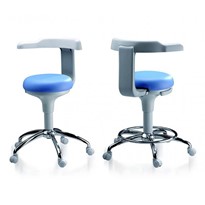Personal protective equipment (PPE) plays a vital role in safeguarding healthcare workers across various sectors, and the dental industry is no exception. Dentists, hygienists, and dental assistants work in environments where exposure to aerosols, blood, saliva, and other bodily fluids is a daily occurrence. This unique setting demands PPE solutions tailored to the specific challenges faced by dental professionals.
Ensuring the right combination of PPE not only protects staff but also contributes to patient safety, reducing the risk of cross-contamination and the spread of infections.
The Challenges of PPE in Dental Practices
One of the primary challenges in dental practices is the frequent generation of aerosols during procedures. Dental handpieces, ultrasonic scalers, and air-water syringes produce fine particles that can remain airborne for extended periods, posing a risk of infection transmission, especially for airborne pathogens like influenza or SARS-CoV-2. Dental professionals work in close proximity to patients' mouths, further heightening their exposure to infectious agents.
This environment creates unique demands on PPE in dental settings. In addition to providing effective barriers, PPE in dental practices must allow healthcare workers to maintain dexterity and clear communication with patients.
Essential PPE for Dental Professionals
- Masks and Respirators
- Surgical Masks: In many dental procedures, standard surgical masks are worn to protect against splashes and large droplets. However, these masks are not sufficient for filtering smaller particles present in aerosols.
- N95 or FFP2 Respirators: During procedures that generate aerosols, dental professionals may require N95 or FFP2 respirators. These respirators provide superior filtration, blocking at least 95% of airborne particles. Their snug fit ensures that no unfiltered air is inhaled, making them a critical line of defence against airborne pathogens.
- Face Shields
- Face shields may be used in combination with masks or respirators to protect the eyes, nose, and mouth from splashes of saliva, blood, and other fluids. In dental settings, face shields offer additional protection during high-risk procedures such as extractions, root canals, and other surgical interventions.
- Their transparent nature allows dental professionals to maintain visual contact and communicate effectively with patients, ensuring that patient care is not compromised.
- Gloves
- Disposable nitrile or latex gloves are essential in preventing cross-contamination between patients and dental professionals. These gloves provide a protective barrier that keeps healthcare workers safe from direct contact with blood and saliva. Additionally, gloves help prevent the transmission of bacteria and viruses from contaminated instruments and surfaces.
- Given the repetitive nature and importance of hand hygiene in dental practices, gloves must be durable and puncture-resistant to withstand prolonged use.
- Gowns and Aprons
- Isolation gowns or fluid-resistant aprons provide an extra layer of protection during procedures where splashes or aerosols are anticipated. Dental professionals use these gowns to shield their clothing and skin from contamination, reducing the risk of spreading infectious materials outside of the operatory.
- Disposable and fluid-resistant options are preferred in most dental settings due to their convenience and high level of protection.
- Protective Eyewear
- Eye protection is critical in dental settings. Goggles or protective glasses help prevent injuries caused by flying debris, splashes, and the spray of particles during dental procedures. These protective eyewear options are especially important for procedures like cavity preparation, crown placement, and scaling.
- For additional safety, anti-fog features ensure that dental professionals can see clearly even when wearing multiple layers of PPE.
Innovations in Dental PPE
In response to the unique demands of dental practices, several innovations have emerged in PPE design to improve comfort, effectiveness, and ease of use:
- Advanced Filtration Technology: Newer models of N95 respirators and surgical masks now feature enhanced filtration systems while maintaining breathability. These are specifically designed to block aerosols without making it difficult for dental professionals to breathe during long procedures.
- Custom-Fit Face Shields: Dental professionals often require precise fit and comfort for extended wear. Custom-fit face shields now incorporate ergonomic designs and anti-glare technology, allowing for clear visibility under bright dental operatory lights.
- Revolutionary Glove Materials: Innovations in glove materials and manufacturing processes have improved their durability while reducing the risk of hand fatigue during long procedures. Lightweight nitrile gloves, for example, offer puncture resistance and superior tactile sensitivity, allowing dental professionals to perform intricate procedures with greater precision.
Addressing PPE Challenges in Patient Interaction
One of the biggest hurdles in dental settings is maintaining communication while wearing multiple layers of PPE. Face masks, respirators, and face shields can muffle voices, making it challenging to engage with patients effectively. To combat this, dental professionals are adopting:
- Clear Masks or Face Shields: These allow patients to see the healthcare professional’s mouth, making communication clearer, especially for patients who are deaf or hard of hearing, or those who rely on lip-reading.
- Technology-Assisted Communication: Some dental practices are using voice amplification devices or lightweight communication systems that allow healthcare professionals to speak clearly through masks and face shields.
PPE Compliance in Dental Practices
Ensuring the proper use of PPE in dental settings is critical to patient and healthcare worker safety. Dental practices should regularly update their PPE protocols in line with guidelines from health authorities, including the Centers for Disease Control and Prevention (CDC) and Occupational Safety and Health Administration (OSHA). Routine staff training on proper PPE donning and doffing techniques can significantly reduce the risk of contamination.
Conclusion
PPE is essential for ensuring the safety of dental professionals and patients alike. By using the appropriate PPE—including respirators, gloves, face shields, and gowns—dental practices can minimise the risk of infection, prevent cross-contamination, and provide high-quality care in a safe environment. Advances in PPE technology and design are helping address the unique challenges faced by the dental industry, ensuring better protection without sacrificing comfort or communication.





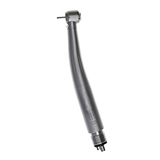
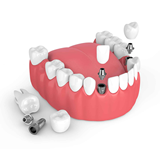


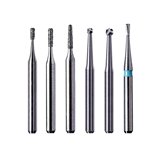
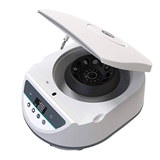
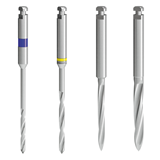

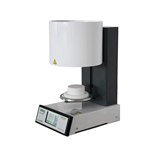
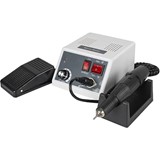











-205x205.jpg)
